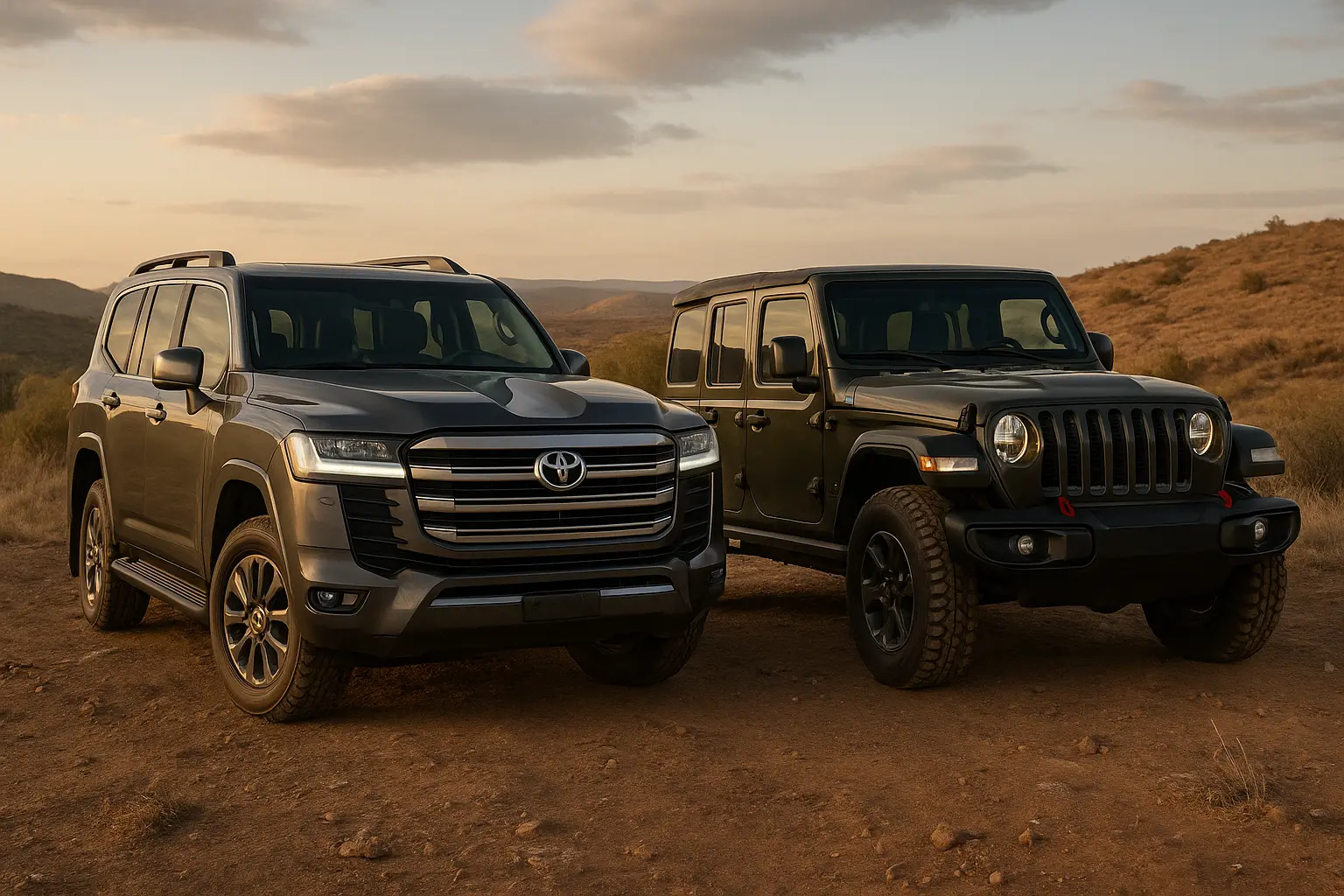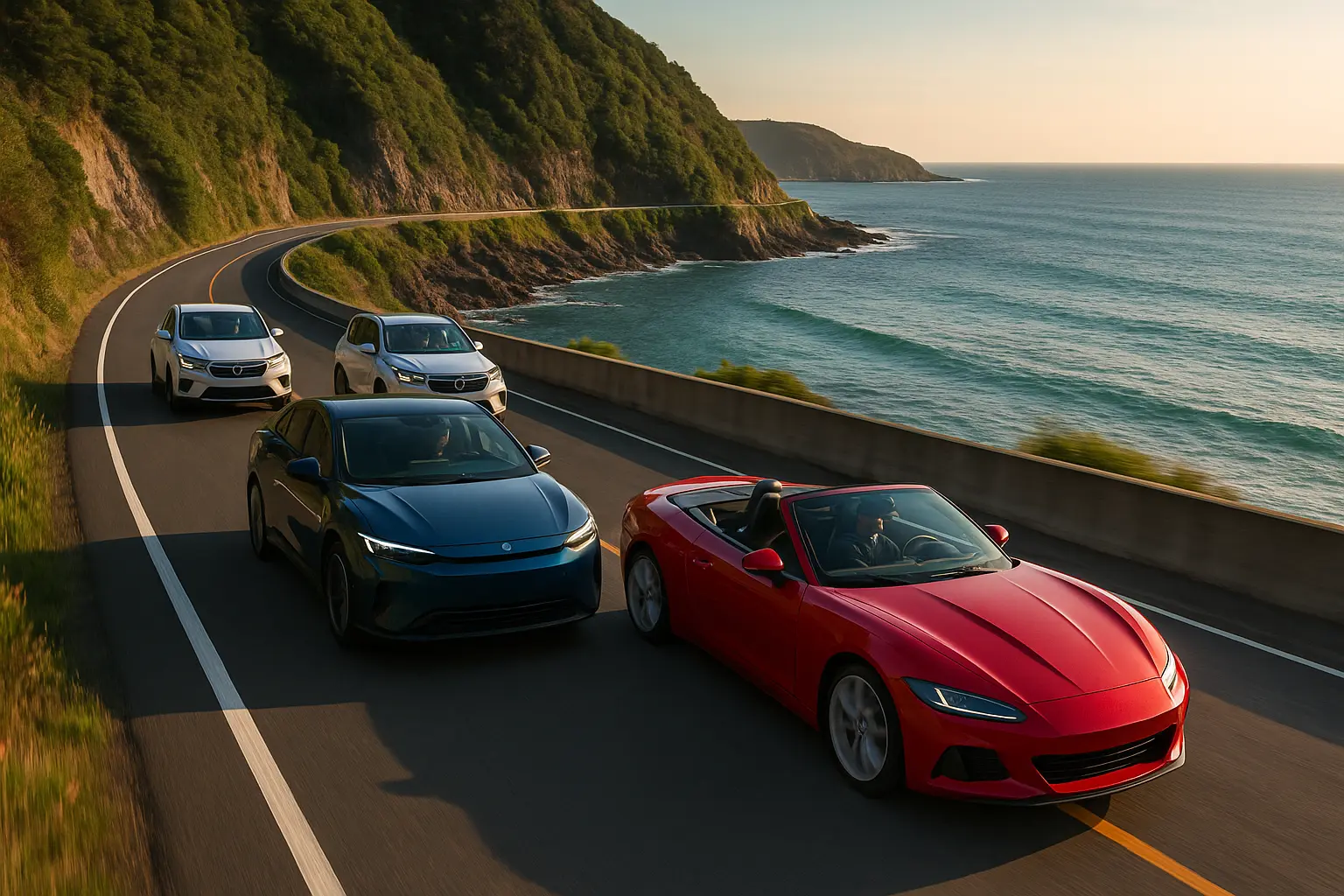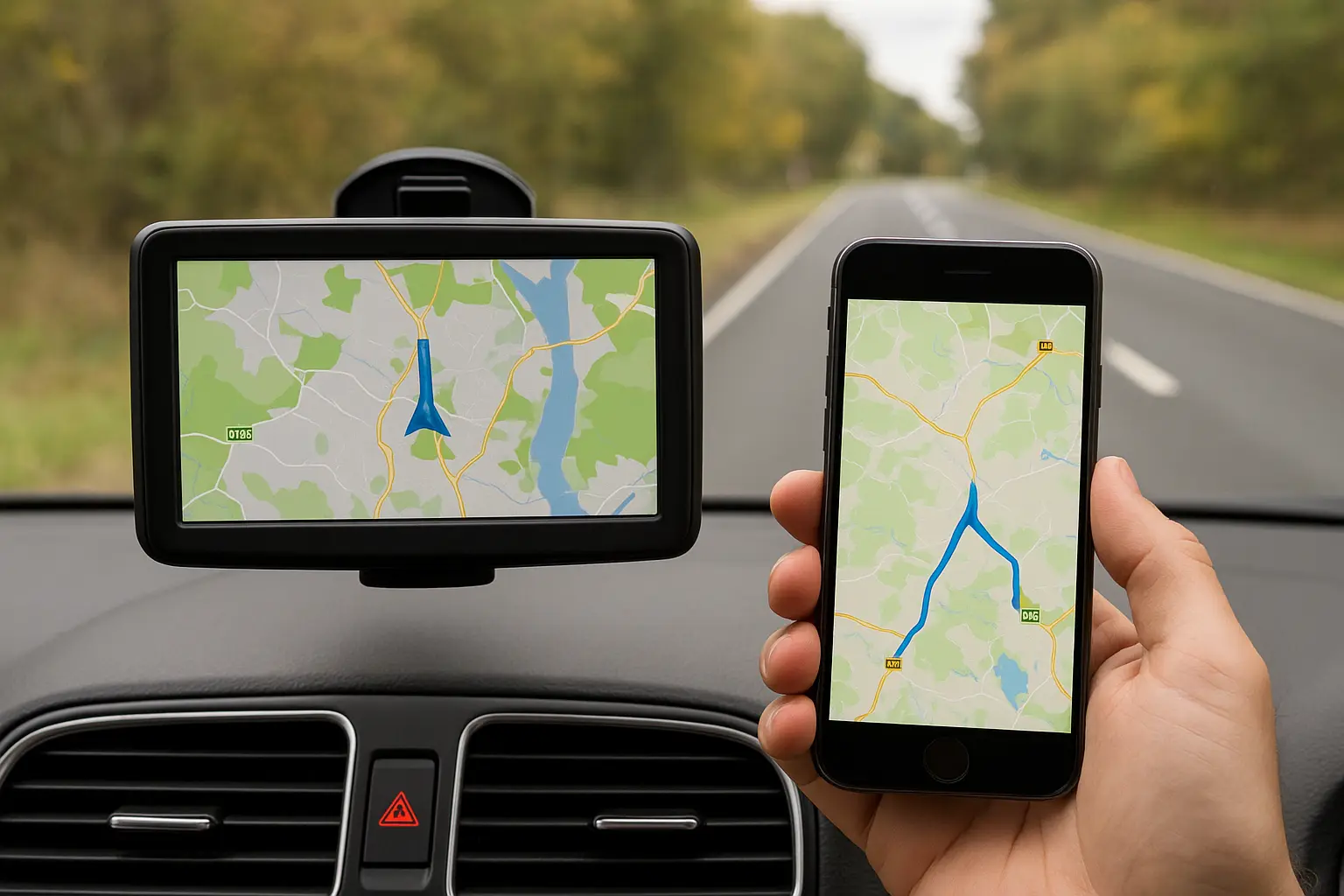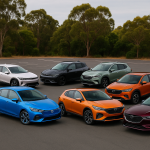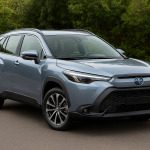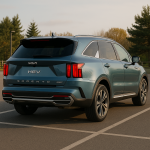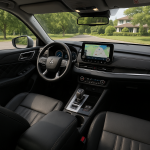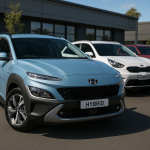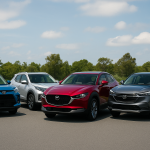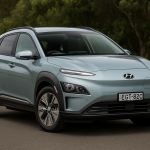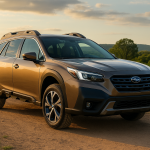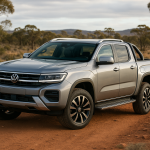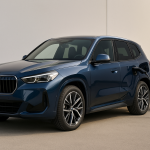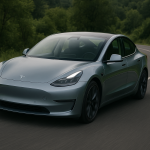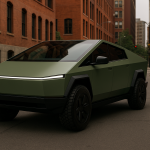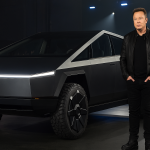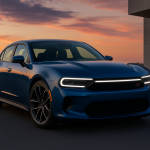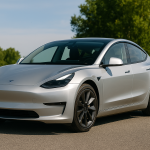Few vehicle matchups stir as much passion in the off-road community as the Toyota LandCruiser versus the Jeep Wrangler. Both are legends in their own right, built on decades of engineering heritage, battlefield-tested ruggedness, and a global reputation for conquering the toughest terrains. In Australia—where vast outback tracks, sandy deserts, and steep coastal ranges define driving challenges—the debate between these two 4x4 titans is more relevant than ever.
This showdown dives deep into every aspect of the LandCruiser and Wrangler. We’ll explore design philosophies, engine options, off-road capability, towing strength, interior comfort, technology, safety, ownership costs, and real-world Aussie suitability. By the end, you’ll have a clear picture of which vehicle might fit your lifestyle, whether that’s hauling caravans, tackling Cape York, or simply enjoying weekend bush tracks.
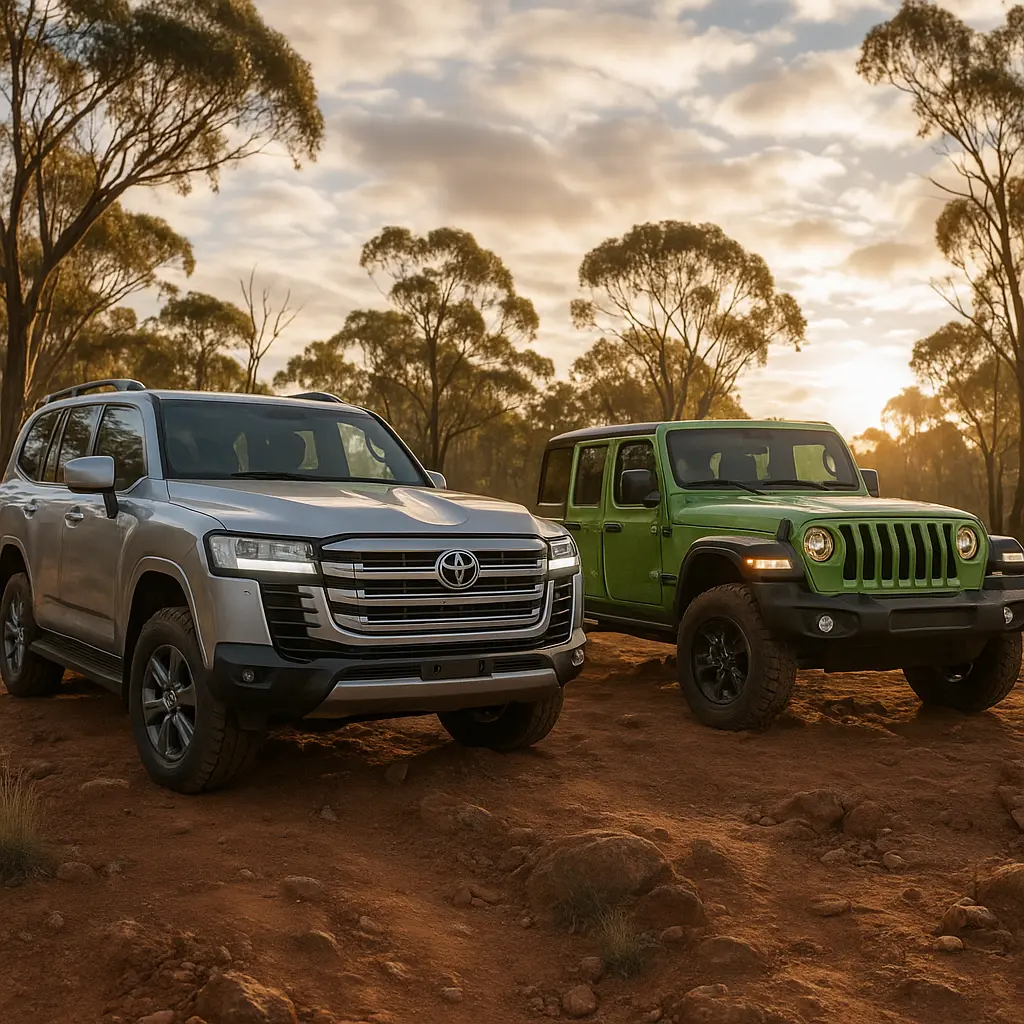
Heritage and Legacy
The Toyota LandCruiser traces its roots back to the 1950s, when it emerged as a rugged utility vehicle for military and civilian use. Over decades, it evolved into Australia’s quintessential long-distance tourer—capable of crossing deserts, towing massive loads, and lasting half a million kilometres with proper care. For many Aussie families, the LandCruiser isn’t just a car; it’s a way of life.
The Jeep Wrangler carries an even older badge of honour. Its DNA comes straight from the original World War II Willys Jeep—the vehicle that arguably invented the modern 4x4. The Wrangler’s iconic design, removable doors and roof, and pure off-road focus keep it rooted in tradition. It has always been less about refinement and more about unfiltered adventure.
While both vehicles stand as icons, their philosophies diverge: the LandCruiser leans toward versatility and endurance, while the Wrangler leans into raw off-road capability and driver connection.
Design and Build
The LandCruiser’s design is all about toughness wrapped in refinement. Modern models sport a commanding front grille, high ground clearance, and muscular stance, but Toyota also integrates a sense of family-friendly SUV style. It feels big because it is big—a vehicle designed to dominate highways and bush tracks alike.
The Wrangler, in contrast, is unapologetically boxy. Its squared-off fenders, circular headlights, and upright windscreen pay homage to its military roots. What sets it apart is its modularity: owners can remove the roof, doors, and even fold the windscreen flat for a unique open-air experience. The Wrangler doesn’t try to blend in—it’s designed to stand out, even in the heart of the outback.
Engines and Performance
LandCruiser Power
In Australia, the LandCruiser typically comes with a powerful turbo-diesel V8 (in older 200 Series models) or a more efficient twin-turbo V6 diesel in the 300 Series. Both options deliver immense torque—ideal for towing heavy loads and powering through sand or mud. Toyota’s engines are famous for reliability, with many vehicles clocking up enormous distances without major issues.
Wrangler Power
The Wrangler’s Australian lineup usually includes petrol V6 and turbo-diesel 4-cylinder options, with newer plug-in hybrid models appearing globally. While not as torque-laden as the LandCruiser’s diesel units, the Wrangler’s engines are paired with short gearing, making them punchy on trails. Jeep also offers Rubicon-spec Wranglers with specialised low-range gearing for rock crawling.
The key difference lies in intent: the LandCruiser is about unstoppable momentum and endurance, while the Wrangler is about precision and agility.
Off-Road Capability
This is where the battle really heats up.
The LandCruiser shines in long-distance off-roading. Its advanced suspension setup, high approach and departure angles, and electronic aids like Crawl Control and Multi-Terrain Select make it a desert-crossing powerhouse. It’s the king of balance—comfortable on sealed roads yet unshakable in the outback.
The Wrangler, however, is arguably the most off-road-focused production SUV in the world. Its short wheelbase, excellent articulation, solid front and rear axles, locking differentials, and removable sway bars give it unmatched trail dexterity. It thrives on technical tracks, rocky climbs, and tight bush trails where the LandCruiser’s size can become a limitation.
For sheer off-road purity, the Wrangler wins. For long-haul reliability and mixed-terrain dominance, the LandCruiser takes the crown.
Towing and Payload
Aussie buyers often care just as much about towing as off-road prowess.
The LandCruiser is built for heavy loads. With towing capacities up to 3,500kg (braked), it’s ideal for caravans, boats, or horse floats. Its payload capacity is also substantial, making it a favourite among tradies and outback travellers alike.
The Wrangler, while capable, maxes out at around 2,500kg towing capacity in Australia. That’s respectable but not in the LandCruiser’s league. If towing is your priority, the Toyota wins by a clear margin.
Interior Comfort and Features
Inside, the LandCruiser feels more like a luxury SUV than a rugged 4x4. Leather seating, premium sound systems, spacious third-row seats, and advanced climate control make it comfortable for families tackling long road trips.
The Wrangler offers a more utilitarian interior, though recent models have improved with touchscreen infotainment, better materials, and supportive seating. Still, it’s more spartan—reflecting its adventurous personality. The ability to hose out the interior after a muddy day is a unique perk, but don’t expect LandCruiser-level refinement.
Technology and Safety
Toyota equips the LandCruiser with advanced driver assistance features: adaptive cruise control, lane departure alert, blind-spot monitoring, and Toyota Safety Sense systems. These make it a reassuring daily driver as well as an adventure vehicle.
The Wrangler includes essential modern safety gear like electronic stability control, multiple airbags, and off-road cameras in Rubicon trims. However, its safety ratings in Australia have sometimes been criticised compared to mainstream SUVs. For families, the LandCruiser’s tech and safety package is more compelling.
Ownership Costs and Reliability
Toyota’s reputation for reliability is unmatched in Australia. LandCruisers are known to run reliably for decades, with a strong dealer network and widespread parts availability. Resale values are among the highest of any vehicle in the country.
Jeep has made significant strides in reliability, but it still faces lingering perceptions of higher maintenance costs and less consistent dealer support. Resale values can also lag behind Toyota. For buyers prioritising bulletproof ownership, the LandCruiser remains the safer bet.
Which Suits Aussie Conditions Best?
For vast outback expeditions, heavy towing, and family adventures, the Toyota LandCruiser is the natural choice. It’s built for the scale of Australia and handles its extremes with grace.
For dedicated off-road enthusiasts who want a vehicle that feels raw, fun, and purpose-built for trails, the Jeep Wrangler is unbeatable. It may not tow as much or offer the same refinement, but it delivers an unmatched off-road thrill.
Conclusion
The LandCruiser and Wrangler aren’t direct rivals so much as complementary legends. One is the ultimate long-distance tourer with luxury leanings, the other a trail-bashing icon that refuses to compromise on off-road purity.
Choosing between them depends on your priorities. Need a family-friendly, towing-capable all-rounder? The LandCruiser is your answer. Want an adventure machine that feels alive on every rocky climb? The Wrangler awaits.
In the end, both vehicles represent the spirit of freedom and exploration that defines Australia’s love affair with 4x4s.
Leave a comment
Your email address will not be published. Required fields are marked *


